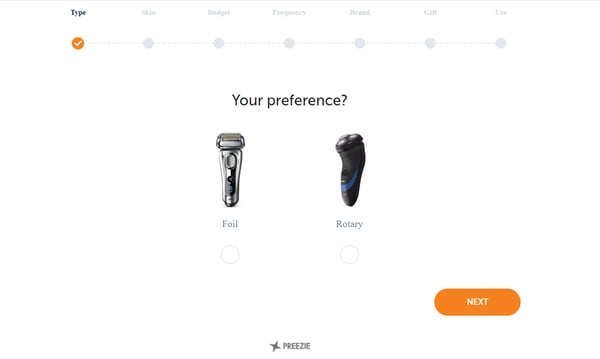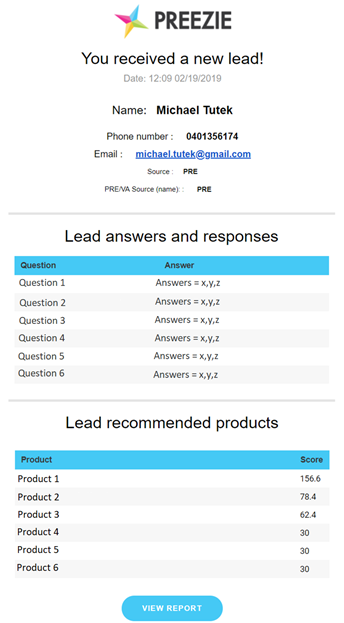Introduction to customer engagement platforms
So, you want to learn what a customer engagement platform is? How they work and what they can do for your e-commerce business? Congratulations, you have made your first step to improve conversions, average order values, customer engagement and much more!
This blog article will discuss and dig deep into all the elements of a customer engagement platform. We will discuss how they work, what they do, their benefits, both tangible and non-tangible, ending with when and where they work.
One thing to remember is that as the name suggests “customer engagement platform” are there to engage and assist your customers, which often results in a better service and customer experience therefore meaning more dollars for your business.
How do customer and e-commerce engagement platforms work
The term “customer engagement platform” can mean essentially anything. It could be a platform that runs in the background of a website that offers personalisation or product recommendations, or maybe it’s a platform that plugs into your website and interacts with your customers directly on the front end (FYI this is what Preezie does). Essentially what I am trying to say here is you cannot pigeon hole the term “customer engagement platform”, it can refer to many different things, as long as they are customer experience related.
The idea here is to not get bogged down by the terminology, customer experience and engagement platforms can mean anything, it’s a whole world of platforms and technology that ultimately “engage” or offer a “engaging” service to your customer. It doesn’t even have to be on an e-commerce website, however this is the most popular application as it provides the highest return on investment.
Let’s define a “Customer engagement platform” as:
“A customer engagement platform is technology that provides a connection service between an end user (consumer) and an organisation (business) that assists and guides consumers in an engaging manner to improve the overall customer experience. This can take place both online and offline”
Let’s give you some examples. Pretend you run a shaver shop online. You have over 500 different types of shavers. In store its easy for you to engage with your customers, however providing that similar service online is very difficult. You know that in-store you convert customers at 30%, however online you convert at 1.5%. You know if you could provide a better “guided selling” experience online as you do in-store you would significantly increase conversions, AOV and reduce the number of returns.
In this scenario you could use a customer engagement platform like Preezie’s. In this example the business would plug in our technology into their website in the form of a “quiz” or “chatbot” that would help assist and guide their consumers to find their most suitable shaver online. The platform would provide a similar level of service your sales experts would provide in-store only online. This is a great example of a customer engagement platform.

Another example may be where 90% of your customers are repeat buyers, meaning you know everything there is to know about them; their age, sex, address, product preferences, etc. In this example the business may decide that providing a quiz that asks for them for their preferences is not suitable for their audience. Rather you can use product recommendations and personalisation engagement platforms that take that already known information and recommend content and products to your users. This is another example of a customer engagement platform, only the difference is this tech sits running in the background without any interactive elements.
Key e-commerce metrics engagement platforms can help
Customer engagement platforms can work wonders for e-commerce businesses. However it is important to understand what are the key metrics used to measure their success and how those metrics work. Some of the main metrics they can improve are:
1. Conversions
The obvious one is conversions. It is not uncommon to see e-commerce engagement platforms increase conversions up to 300%. We live in the world of personalisation and customer experience. If you can predict or recommend a product or content to a consumer as a real-life sales expert would then you significantly increase your chances of making a sale. The same can be seen for lead conversion. Currently Preezie’s average “lead generation” conversion rate sits at 10%. This is x3-4 industry averages. It is clear here from both Preezie’s software and other engagement tech in the market that if you provide a “guided selling” or “personalised” experience through these platforms your customers see the value.
2. Engagement
We are talking about customer “engagement” platforms; therefore, we cannot forget the engagement metric. Engagement can be measured in lots of different ways; time spent on page; bounce rates; pages viewed per session and more. When you implement a platform that is meant to improve customer engagement it is essential to understand how you accurately measure this. For example, many feel the longer a customer spends on your site the better. This is not always the case. Let me pose a scenario to you. How do you know that the customer spends more time on your site because they are not finding suitable products fast enough? There are obvious metrics like bounce rates that are no brainers and there are other metrics like “time on site” that need to be carefully analysed before making decisions and forming a consensus on the results of a system. For some bench marketing Preezie has seen an engagement rate of 40%. Meaning that for every 100 people that see how quizzes 400 of them engage and use them. Preezie PLUG! 😊
3. Time to buy
We must not forget the end game is to provide a better customer experience for the customer, but we cannot do that if there is no return for the business itself. I often like to quote a metric I believe is often overlooked, which is “Time to buy”. Time to buy refers to the number of seconds it takes on average for your customers to find their suitable product and then purchase it.
As mentioned above if your customers take on average 20 minutes to buy, assuming your checkout is fast then how do you know a reason for a low conversion isn’t the “time spent to find a suitable product”. It is easy to go online, see a page of 500 shoes and get completely overwhelmed with the number of choices, troll through 10s of pages, taking a lot of your customers value time and deciding not to buy because, “its all to hard” in the end. Fun Fact: This is known as “analysis paralysis” or “choice paralysis” and can be a big problem.
4. Average order value (AOV)
Using the correct platforms will increase your average order value. One of the best ways to help increase AOV is to make your customers feel 100% comfortable with the item they are purchasing. When you increase confidence in a transaction you in turn increase the chances that customer will purchase a high value product and/or more product. Hence when using the correct customer engagement platforms, you will often see a lift in AOV, this can go anywhere from a 5-10% increase all the way to doubling AOV.
5. Returns
Returns can be a big issue for companies, in particular fashion retailers often have returns up and beyond the 25% mark. The idea here is that when you provide a “guided selling” customer engagement experience your customer will naturally be more confident in their purchase (so they wont double up on sizes, knowing they can send one back for free) or will be more confident in a particular product they purchase, hence their level of satisfaction is already high before even receiving the product.
Non tangible e-commerce benefits
We can’t forget the non-tangible benefits. Well in reality they are tangible, however measuring some benefits are so difficult that its most likely businesses will place them in a non-tangible bucket. Some of these are:
6. Choice/analysis paralysis
Some metrics are hard to measure. For example, analysis paralysis. For those who don’t know this is when a customer is offered to much choice, becomes overwhelmed and doesn’t decide what to buy as they are in a choice paralysis. I can think of several ways to measure this; for example; time spent on a specific page, however I would be first to put my hand up to say that it would not be accurate. Measuring this would be extremely difficult if not near impossible. However, it can make a real effect on your business and your conversions. I have asked dozens of e-commerce managers and experts if they know how many people wouldn’t buy due to analysis paralysis and not one knew the answer, however they all agreed it would certainly be an important factor to their low conversions.
Using customer engagement platforms like Preezie’s is one method to reduce this effect. If you use techniques like guided selling in your customer engagement platform you will assist and guide customers like a sales assistant does in store. This will obviously reduce stress, confusion and analysis paralysis having a direct effect to improve customer satisfaction and conversions online.
7. Ask don’t assume
One thing lots of business do is assume, rather than ask. I found this a little fascinating, if you have brand reputation and are interacting with real buyers then asking 5 questions, taking them 30 seconds typically is not an issue! If you ask at the right time for the right reason! For example, Preezie’s quizzes have a 30% completion rate over the last month. Meaning for every 1000 times a page was loaded with our customer engagement quiz we got 300 full surveys of a customer’s specific requirements, this is considering we are not even the sole focus on that page. For dedicated pages we have seen that rate lift to guy under 40%. Proof is in the pudding.
I am mentioning this as lots of companies believe tracking user data and previous purchase history is a better indication for consumer trends. I can tell you 100% you are wrong. Think about the logic, how many times have you browsed certain products online knowing you would not purchase it. Its call winder shopping, dream shopping, fun shopping, but its not real shopping. For example; I cannot afford to buy a $10,000 TV, but I always spend a lot of time looking, dreaming and understanding them on websites. When taking into account previous purchases you can misuse the data, I purchased items 12 months ago that I wouldn’t buy to save my life now. Times move so fast and human beings are inherently jealous, curious and mislead creatures which means the best method to extract the right information is to ask at a time where the user is ready to take their shopping e-commerce experience seriously.
8. Profile customers properly
With the right customer engagement platforms, you will find yourself with lots of accurate data for customer profiling. See below:

This information can be used in countless ways to ensure your offers, discounts and content shown to a user is tailored specifically towards what they are interested in. It may be worth while asking if what they have purchased is a gift of for themselves! For example, I may buy something for my wife. Now that company “thinks” they know me, however they think from my purchase and browsing history that I am a “28-year-old, 5 foot 8, Australian women”, they couldn’t be more wrong! :S.
When to use a customer engagement platform?
Its import to understand when to use these platforms and when your efforts are best spent elsewhere. For example Preezie has a general customer type that we work with and those customers need to tick the following boxes: have a large product range (so that analysis paralysis would most likely occur), have a focus online and sell a “considered purchase” product, meaning that the user needs to actually think about what they are buying.
It is important to understand when you should use a customer engagement platform and how it will be implemented into your digital strategies and what success will look like for that platform!
If you are interested to learn more about customer engagement platforms please feel free to reach out.

